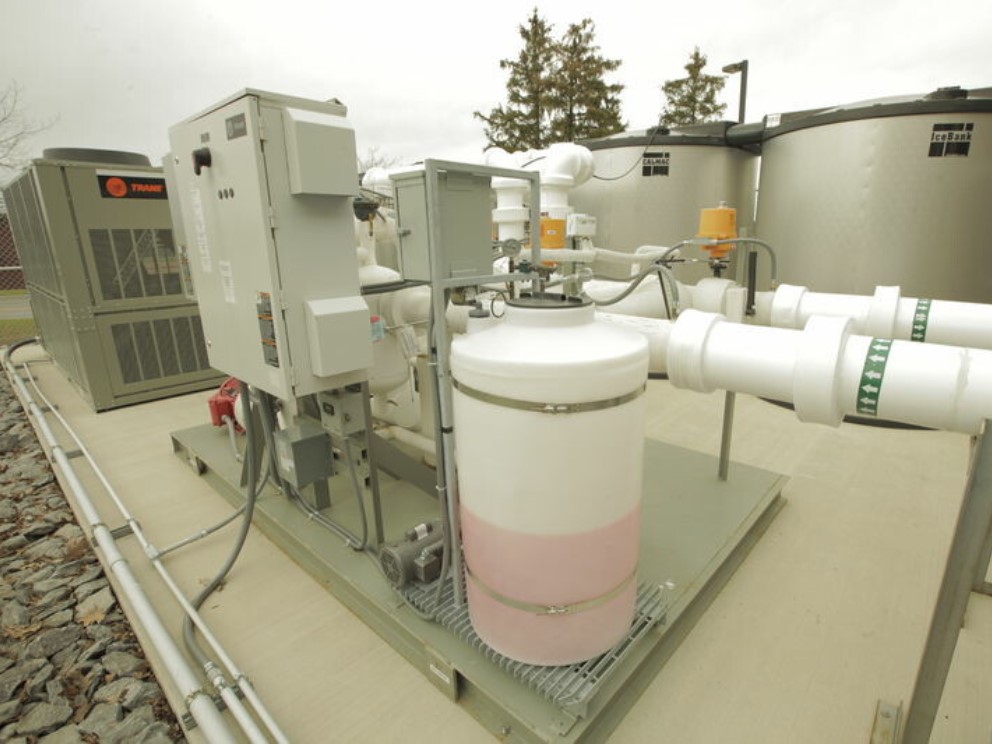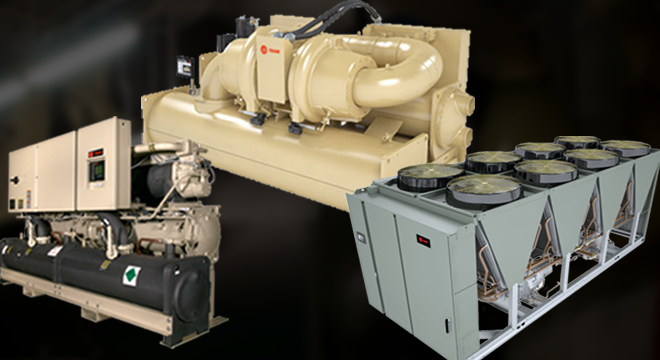CALMAC® Ice Bank® Energy Storage Tank Model C
How Energy Storage Tanks Work
Thermal energy storage is like an "HVAC battery" for a building’s air-conditioning system. Trane Thermal Energy Storage systems use standard cooling equipment, plus an energy storage tank to shift all or a portion of a building’s cooling needs to off-peak, night time hours. Model C energy storage tanks store energy in the form of ice during off-peak periods when utilities generate electricity more efficiently with lower energy and demand charges. The stored ice is then used to cool the building occupants the next day, during the peak periods when utility rates are at their highest.
Built-in Convenience and Reliability
Developed in response to customer requests for more flexible siting and faster installation of storage tanks, the second-generation CALMAC Model C tanks can be bolted to each other due to their internal headers and four inch flanges. Internalized headers eliminate most external piping (80 percent!) which results in a 20 percent smaller footprint requirement and more siting arrangement flexibility, cutting installation cost and time of installation.

High reliability – low maintenance
The second-generation Model C Thermal Energy Storage tank also features a 100 percent welded polyethylene heat exchanger and improved reliability, virtually eliminating maintenance. The tank is available with pressure ratings up to 125 psi.
Control strategies
There are any number of control strategies that can be utilized to take advantage of the benefits of thermal energy storage. However, there are two basic approaches that define the common limits of system design. Electric rates and building usage will determine which control strategies are best for the project.
- Full Storage A chiller sized large enough to charge enough energy storage can shift the entire load to off-peak periods.
- Partial Storage The chiller works in conjunction with the CALMAC energy storage tanks during on-peak periods to manage the building’s cooling load. During off-peak hours, the chiller charges the tanks for use during the next day’s on peak cooling period.

Glycol Recommendations
A secondary fluid is needed that can operate and flow at temperatures low enough to freeze water. An ethylene-based or propylene-based glycol solutions is recommended. A premixed solution of an industrial heat transfer solution that is specially formulated for low viscosity and superior heat-transfer properties should be used. Industrial based HTF’s contain a multi-component corrosion-inhibitor system that can be maintained and provide a long useful life.

Maintenance
You can maintain your CALMAC tanks and the energy storage system by using a maintenance process similar to that used for conventional cooling.
- Perform chiller maintenance as required.
- Ensure the controls are operating properly and in sync with the
utility rates.
- Check the health of the glycol fluid
annually.
- Check the water level in the tanks.
- Add biocide as needed to eliminate algae growth.
Models
Looking for BIM?
Select your Model C tank below and download CAD file for your project.
Model C tank CAD drawings
-
IMAGE
1082C2F
-
IMAGE
1082C3F
-
IMAGE
1082CU4F
-
IMAGE
1098C2F
-
IMAGE
1098C3F
-
IMAGE
1098C4F
-
IMAGE
1105C2F
-
IMAGE
1105C3F
-
IMAGE
1105C4F
-
IMAGE
1105CU4F
-
IMAGE
1190C2F
-
IMAGE
1190C3F
-
IMAGE
1190C4F
-
IMAGE
1220C2F
-
IMAGE
1220C3F
-
IMAGE
1220C4F
-
IMAGE
1320CSF
-
IMAGE
1320CRF
-
IMAGE
1320C4F
-
IMAGE
1500CSF
-
IMAGE
1500CRF
-
IMAGE
Totally Buried 1320CRF
Resources
Check out the links below to learn more about the benefits that thermal storage energy can provide for you.









